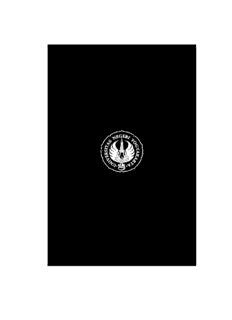
using picture series to improve the writing ability of the eighthgrade students at smp negeri 2 ... PDF
Preview using picture series to improve the writing ability of the eighthgrade students at smp negeri 2 ...
USING PICTURE SERIES TO IMPROVE THE WRITING ABILITY OF THE EIGHTH GRADE STUDENTS AT SMP NEGERI 2 WONOSARI IN THE ACADEMIC YEAR OF 2013/2014 A THESIS Presented as a partial fulfillment of the requirements for the attainment of the Sarjana Pendidikan Degree on the English Language Education Written by: Evi Amalia Mayasari 10202241055 ENGLISH LANGUAGE EDUCATION DEPARTMENT FACULTY OF LANGUAGES AND ARTS STATE UNIVERSITY OF YOGYAKARTA 2014 DEDICATIONS This thesis is dedicated to my beloved parents, my brother, and my friends. I thank them for all the love, prayers, support, and patience. I love you all. v MOTTOS “Man Jadda Wa Jadda” Whoever does something persistently will succeed. Allah will make a way when there seems to be no way. vi ACKNOWLEDGEMENTS Alhamdulillah hirobbilalamin, all praises are always sent to Allah SWT, the Almighty who bless me with so many miracles and for always giving me the ability, competency, and opportunity to finish this thesis. I would like to express my sincere gratitude and appreciation to my supervisor, Dr. Agus Widyantoro, M. Pd for his guidance, feedback, patience, time, and support throughout the process of writing this thesis. His feedback and suggestions were a big help for me in finishing this thesis. I also express my deepest gratitude to the headmaster of SMP Negeri 2 Wonosari, Drs. Suparto, for giving me permission and support to conduct the research. Without him, the thesis would have never been here. Deepest thanks are also given to Mr. Farid Gunawan, S.Pd. for the suggestions, guidance, and support in conducting the research. I want to express my thanks to the students of VIII D for the cooperation during the process of the research. I hope they all succeed in their study. My special gratitude is expressed to my beloved father, mother, and brother. I really thank them for all their prayers, support, and love for me. Their prayers and support are the source of my strength. Special thanks are also given to my beloved classmate (PBI C 2010) and my family in Kos Polos and Kos Narada 14 B. I really thank them for the great togetherness, beautiful friendship, and love. I also thank my friend, Tanti, who always encourages me and supports me to finish this thesis. To my special BABO girls (Rintik, Arin, Galih, and Tatik) who have always been there for me and support me, thank you so much for all the beautiful memories and beautiful friendship. I hope we will be good friends forever. vii At last, I realize that this thesis is far from being perfect so any criticism, idea, and suggestion are always appreciated in order to improve it. I hope that this thesis would give many advantages to the readers and other researchers who conduct similar topics. Yogyakarta, October, 2014 Evi Amalia Mayasari viii TABLE OF CONTENTS Page TITLE PAGE .................................................................................................. i APPROVAL .................................................................................................... ii RATIFICATION ............................................................................................ iii DECLARATIONS .......................................................................................... iv DEDICATIONS .............................................................................................. v MOTTOS ......................................................................................................... vi ACKNOWLEDGEMENTS ........................................................................... vii TABLE OF CONTENTS ............................................................................... ix LIST OF TABLES .......................................................................................... xii LIST OF FIGURES ........................................................................................ xiii ABSTRACT ..................................................................................................... xiv CHAPTER I: INTRODUCTION A. Background of the Problem .................................................................. 1 B. Identification of the Problem ................................................................ 4 C. Limitation of the Problem ..................................................................... 6 D. Formulation of the Problem .................................................................. 7 E. Objectives of the Study ......................................................................... 7 F. Significance of the Study ...................................................................... 7 CHAPTER II: LITERATURE REVIEW AND CONCEPTUAL FRAMEWORK A. Review of Theories ............................................................................... 9 1. Theories of Writing ......................................................................... 9 a. Definitions of Writing ............................................................... 9 b. Processes of Writing ................................................................. 11 c. Microskills and Macroskills of Writing .................................... 13 2. Teaching Writing ............................................................................ 14 ix a. Differences between L1 and L2 Writing .................................. 14 b. Strategies in Teaching Writing ................................................. 16 c. Approaches in Teaching Writing .............................................. 20 d. Types of Classroom Writing Performances .............................. 22 e. The Roles of Teachers in Writing ............................................ 23 f. Teaching Writing in Junior High School ................................. 25 g. Text-Based Instruction .............................................................. 27 h. Media in Teaching and Learning ............................................. 29 i. Picture Series as Visual Media in Teaching Writing ............... 32 B. Reviewsof Related Studies ................................................................... 35. C. Conceptual Framework ......................................................................... 37 CHAPTER III: RESEARCH METHOD A. Research Type....................................................................................... 39 B. Research Setting ................................................................................... 40 C. Research Subjects ................................................................................. 41 D. Instruments............................................................................................ 41 E. Data Collection Techniques .................................................................. 42 F. Data Analysis Techniques .................................................................... 44 G. Reasearch Validity and Reliability ....................................................... 45 H. Research Procedures ............................................................................. 47 CHAPTER IV: RESEARCH FINDINGS AND DISCUSSION A. Research Findings 1. Reconnaissance .............................................................................. 50 a. Identification of the Field Problems ......................................... 50 b. Identification of the Field Problems to Solve ........................... 53 2. The Implementation of Cycle I ...................................................... 55 a. Planning..................................................................................... 55 b. Actions and Observations of Cycle I ........................................ 58 c. Reflection .................................................................................. 73 x
Description: